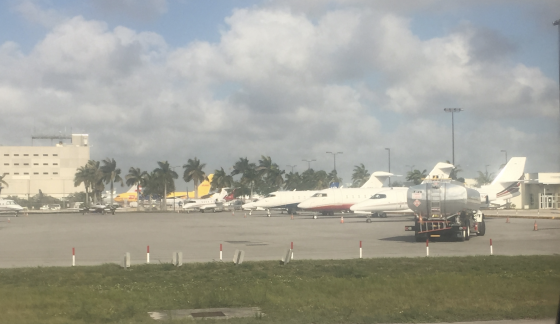Newcomers looking for deals and cash-strapped private jet owners are causing a surge in illegal charter activity. However, FAA enforcement often misses the mark, industry experts say.

Illegal charter can be deadly. Last year’s death of European soccer star Emiliano Sala came on an aircraft not authorized for commercial charters in Europe. It was flown by a pilot who wasn’t qualified. A 2018 Falcon 50 crash that killed both pilots in South Carolina found that maintenance records weren’t up to date. The pilots were not qualified to fly Part 135 charter flights.
We’ve seen a dramatic uptick in reports (to our illegal charter hotline), very detailed information…and I don’t even think the full surge is in motion
Ryan Waguespack, Senior VP, NATA
While here in the U.S., the Federal Aviation Administration has stepped up its focus on the gray market, a panel of industry experts speaking during Corporate Jet Investor 2020 warned that a sometimes misguided approach puts legitimate Part 135 operators in the spotlight while rogue players that are harder to spot continue to peddle their unregulated services.
“We’ve seen a dramatic uptick in reports (to our illegal charter hotline), very detailed information…and I don’t even think the full surge is in motion,” said Ryan Waguespack, a senior vice president with the National Air Transportation Association, a trade group of business aviation service providers.
At the same time, two aviation attorneys said the Federal Aviation Administration’s recent focus on illegal charters is sometimes missing the mark.
Vedder Price’s David Hernandez is a former prosecutor at the FAA and a Transportation Department Honors attorney. He is currently representing a Part 135 operator “who’s getting hammered in an enforcement action” despite his analysis, “all of the flights were legitimate.”
He told attendees, “(The FAA is) hearing so much about (illegal charter)…they’re taking a very broad perspective of how to investigate…I’m calling it a fishing expedition because they’re going after everything. They’re following up with clients. They’re getting flight logs. They’re calling (the operator’s) customers and asking who was on this flight? What was the purpose? This is the flip side of overly aggressive FAA not understanding what the process is and trying to find something that’s there when it may not be there. They suspect because they hear rumors.”
David T. Norton, head of the aviation practice at Shackelford, Bowen, McKinley & Norton agreed. “The easiest people for the FAA to find to crackdown are their certificate holders. It’s really hard to find some guy in West Texas who is just doing (illegal) dry leasing,” he said.
Earlier this year, the FAA announced a proposed fine against Jem Air which it later rescinded.
All three panelists praised the FAA for working with the industry to educate the industry, particularly pilots who are often unwitting accomplices. Norton added, more education is also needed for the agency’s safety inspectors to help them identify where and how to find the bad actors, noting the industry’s narrow line in encouraging the regulators to be more proactive in pursuing illegal charters. “You have to be careful when you poke the bear.”
Hernandez warned that more illegal charters might be in the offing. With the payroll support from the CARES Act having ended, he calls the winter a “make or break” period.
Operators and owners of Part 91 aircraft skirt the more rigorous Part 135 regulations that govern charter. They use dry leases as well as under the table money passed between “friends who won’t tell on each other.”
Both lawyers say they are approached by would-be clients to assist in setting up operations that would be illegal. Too many times, when they don’t get the answer they were looking for, they never come back.
Norton said he’s heard from first-time airplane buyers with the idea of making money by flying people for compensation. However, they have no idea about the rules and regulations.
Part 135 rules have more stringent pilot training, medical, operational, and maintenance requirements than Part 91. The latter covers airplanes flown exclusively for their owners.
Norton said the COVID-driven influx of new customers who don’t know what they’re doing simply shop on price. “People are looking for alternatives (to the airlines), and when they do that, nine times out of 10, they want to find an airplane, and they’ll sign whatever paperwork is in front of them.”
All panelists applauded the FAA’s increased interest in illegal charters, with Vedder pointing to an estimated “$10 to $15 million in enforcement actions” over the last several years, an amount that previously was “virtually unheard of.”
However, they said they would like to see the FAA do more after fatal crashes, where they said posthumous enforcement isn’t pursued, as those who perished “paid the ultimate penalty. Case closed.”
Hernandez noted for the growing attention of illegal charter in the U.S.; he attributes it in part to this country being the world’s largest market for private aviation. He estimates it is still a small percentage. Illegal charter, he said, is still a much bigger problem in the Middle East and Africa.